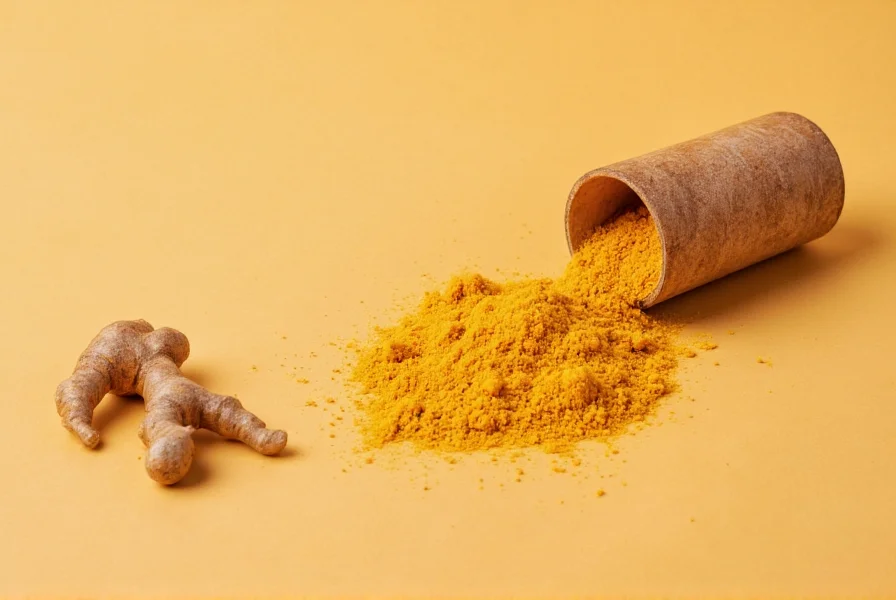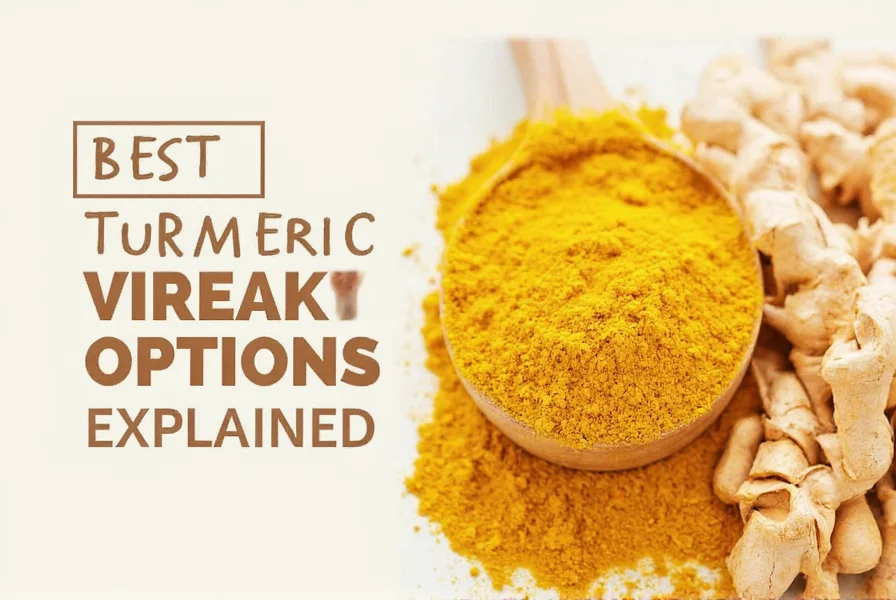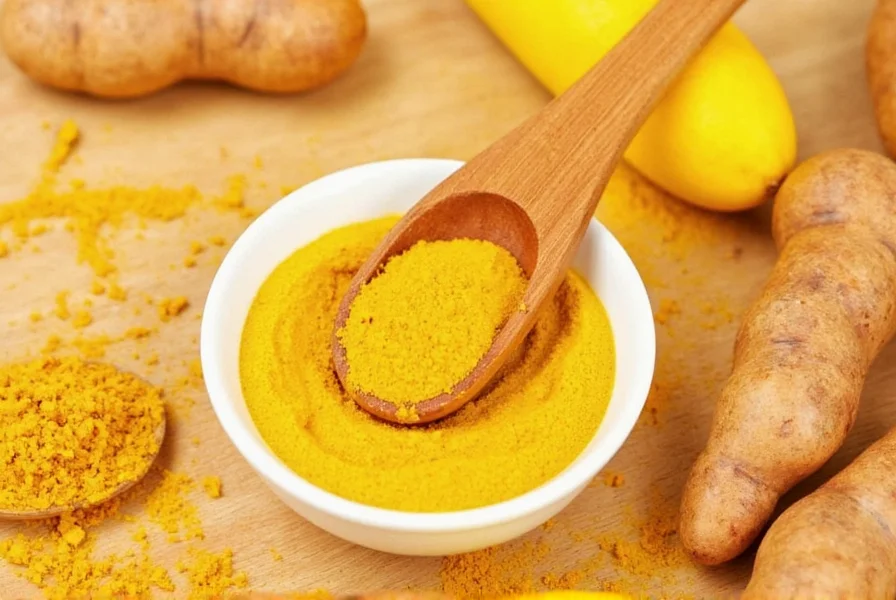When searching for turmeric replacement options, understanding what aspect of turmeric you need to replicate is crucial. Turmeric serves multiple purposes in cooking and wellness routines—providing vibrant yellow color, earthy flavor, and notable health benefits primarily due to curcumin. This comprehensive guide explores effective substitutes based on your specific requirements, whether you're cooking a curry, making golden milk, or seeking similar anti-inflammatory properties.
Understanding Turmeric's Key Properties
Turmeric (Curcuma longa) offers three primary attributes that determine appropriate replacements:
- Color contribution: Its distinctive golden-yellow hue enhances visual appeal in dishes
- Flavor profile: Earthy, slightly bitter with subtle peppery notes
- Health properties: Contains curcumin, known for anti-inflammatory effects
Effective turmeric replacement strategies must address which of these properties matters most for your specific application. Many people searching for what can I use instead of turmeric in recipes don't realize that no single substitute replicates all three aspects perfectly.

Best Turmeric Replacements by Primary Need
Choosing the right substitute depends entirely on whether color, flavor, or health benefits are your priority. Here's a detailed comparison of effective turmeric replacement options:
| Substitute | Best For | Ratio to Turmeric | Key Benefits | Limitations |
|---|---|---|---|---|
| Saffron | Color replacement | 1 pinch = 1 tsp turmeric | Intense yellow color, subtle flavor | Expensive, minimal health benefits comparison |
| Ginger | Flavor replacement | 1:1 ratio | Similar earthy notes, anti-inflammatory properties | No yellow color, stronger spicy flavor |
| Curry powder | Complete flavor profile | 1.5 tsp = 1 tsp turmeric | Contains turmeric plus complementary spices | Variable composition, may alter dish flavor |
| Annatto | Natural yellow coloring | 1/4 tsp = 1 tsp turmeric | Vibrant color, neutral flavor | No health benefits comparable to turmeric |
| Paprika | Color and mild flavor | 1:1 ratio | Provides color, subtle flavor | Reddish hue rather than yellow |
Detailed Analysis of Top Turmeric Replacement Options
Saffron: The Premium Color Alternative
When searching for turmeric substitute for golden milk or other color-dependent applications, saffron provides the closest visual match. This expensive spice delivers intense yellow coloring with minimal quantity needed. While saffron won't replicate turmeric's earthy flavor, it works well in rice dishes, sauces, and beverages where color matters most. For those exploring natural yellow food coloring alternatives, saffron offers a premium solution without artificial dyes.
Ginger: Flavor and Health Benefits Focus
Fresh or dried ginger makes an excellent turmeric replacement when flavor similarity and health properties are priorities. Both belong to the Zingiberaceae family, sharing some chemical compounds. Ginger provides similar anti-inflammatory benefits though through different mechanisms (gingerols rather than curcumin). This makes it particularly valuable for those seeking turmeric replacement with similar anti-inflammatory properties. Note that ginger lacks turmeric's distinctive color.

Curry Powder: The Convenient Blend Option
Many commercial curry powders already contain turmeric as a primary ingredient. When you need a turmeric replacement in curry recipes specifically, using extra curry powder can compensate while maintaining the intended flavor profile. This approach works well for those asking how to replace turmeric in curry without dramatically altering the dish's character. Check ingredient labels as curry powder compositions vary significantly between brands.
Annatto and Paprika: Natural Coloring Solutions
For recipes where turmeric's primary function is coloration rather than flavor, annatto seeds (or achiote) provide excellent yellow-orange coloring with minimal flavor impact. Paprika, particularly sweet Hungarian varieties, offers a reddish hue that can approximate turmeric's visual effect in some dishes. These options answer the common query about what can I use instead of turmeric for color in food preparation.
When Substitutions Won't Work
Certain applications have no true turmeric replacement. In therapeutic contexts requiring curcumin's specific biochemical actions, no substitute provides identical effects. For traditional Ayurvedic preparations where turmeric plays a specific role, substitutions may undermine the intended purpose. When following authentic regional recipes, altering key ingredients like turmeric often creates a fundamentally different dish.
Practical Tips for Successful Substitution
- For best turmeric replacement for cooking, consider combining substitutes (e.g., saffron for color plus ginger for flavor)
- Add black pepper to any substitute when seeking health benefits, as piperine enhances absorption of many compounds
- Adjust liquid content when using powder substitutes, as absorption rates differ
- Introduce substitutes gradually, tasting as you go to achieve desired results
- Consider the dish's other ingredients when selecting a replacement
Frequently Asked Questions
Can I completely replace turmeric in golden milk?
Yes, but with trade-offs. For color, use saffron or annatto. For flavor approximation, combine ginger and a small amount of cinnamon. Note that you won't replicate curcumin's specific health benefits, though black pepper with other spices provides different anti-inflammatory compounds.
What's the best turmeric replacement for someone with turmeric allergy?
For allergies, avoid all Curcuma species. Use annatto for color replacement and ginger for flavor. Consider consulting an allergist about potential cross-reactivity with other spices in the ginger family. Curry powder often contains turmeric, so check labels carefully when seeking safe turmeric replacement options.
Does ginger have similar health benefits to turmeric?
Ginger provides different but valuable anti-inflammatory compounds (gingerols versus curcumin in turmeric). While not identical, both spices offer health benefits. For maximum absorption of either, combine with black pepper and a healthy fat. This makes ginger one of the most effective turmeric replacements when health benefits are a priority.
How much saffron equals one teaspoon of turmeric?
A small pinch of saffron threads (about 15-20 threads) equals approximately one teaspoon of turmeric for coloring purposes. Saffron is significantly more potent for color but lacks turmeric's flavor profile. This ratio works well for dishes where visual appearance matters most in your turmeric replacement strategy.
Can I use paprika instead of turmeric in curry?
You can use paprika as part of a turmeric replacement in curry, but it will change the dish's character. Paprika provides color but with a reddish hue rather than yellow, and offers a different flavor profile. For best results, combine paprika with ginger and a small amount of mustard powder to approximate turmeric's complex flavor when seeking curry-specific turmeric replacement options.











 浙公网安备
33010002000092号
浙公网安备
33010002000092号 浙B2-20120091-4
浙B2-20120091-4